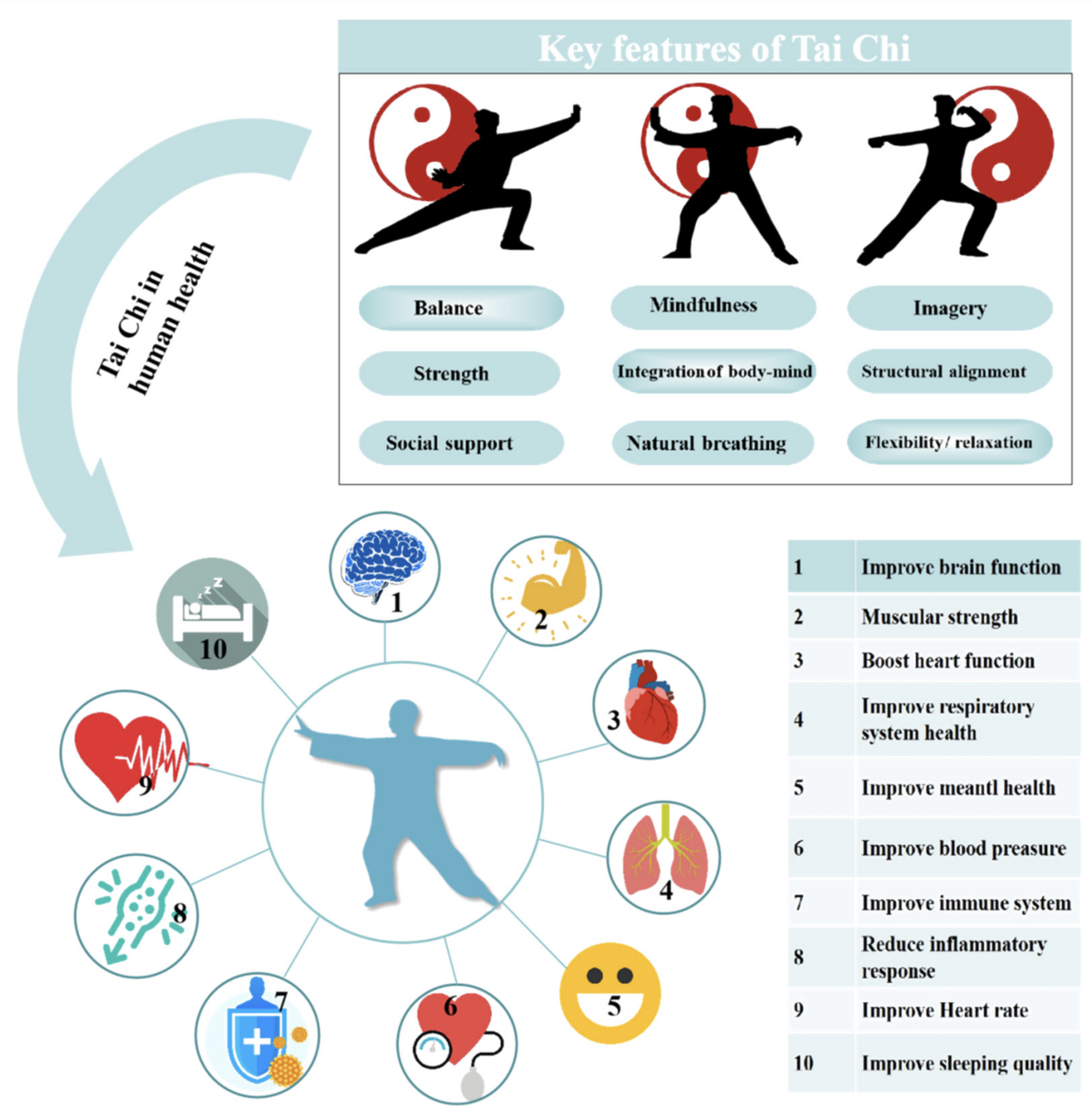Tai Chi Explained
Originally developed in China by monks for self-defence, tai chi has evolved into a graceful form of exercise that is now used worldwide for stress release, balance, strength, coordination and cognitive improvement. It is often described as moving meditation, as it promotes a sense of stillness and calm through gentle, flowing movements. These movements are performed slowly and with focus (mindfulness). Breathing is deep and relaxed. Tai chi is a non-competitive exercise, incorporating gentle stretching and rotational movements to massage the internal organs. Each posture flows smoothly into the next, ensuring that the body is in constant motion.
Tai chi is a low impact exercise and puts minimal stress on muscles and joints, making it generally safe for all ages and fitness levels. Tai Chi requires no special equipment so practice can be done anywhere - indoors or outdoors, at any time of the day. Although tai chi can be quite social, it can also be practised alone, cultivating a sense of peaceful mindfulness.
When learned correctly and performed regularly, tai chi can be a positive part of an overall approach to improving your health. The benefits of tai chi may include:
Decreased stress, anxiety and depression
Improved mood
Improved aerobic capacity
Increased energy and stamina
Improved flexibility, balance and agility
Improved muscle strength and definition
Some evidence indicates that tai chi may also help to:
Enhance quality of sleep
Enhance the immune system
Help lower blood pressure
Improve joint pain
Improve symptoms of congestive heart failure
Improve overall well-being
Reduce risk of falls in older adults
Tai Chi was recently (2020) included in China's national intangible cultural heritage directory
Enjoy this short video to experience the calm and stillness of Tai Chi
Key Features and Benefits of Tai Chi
Image from mdpi.com


